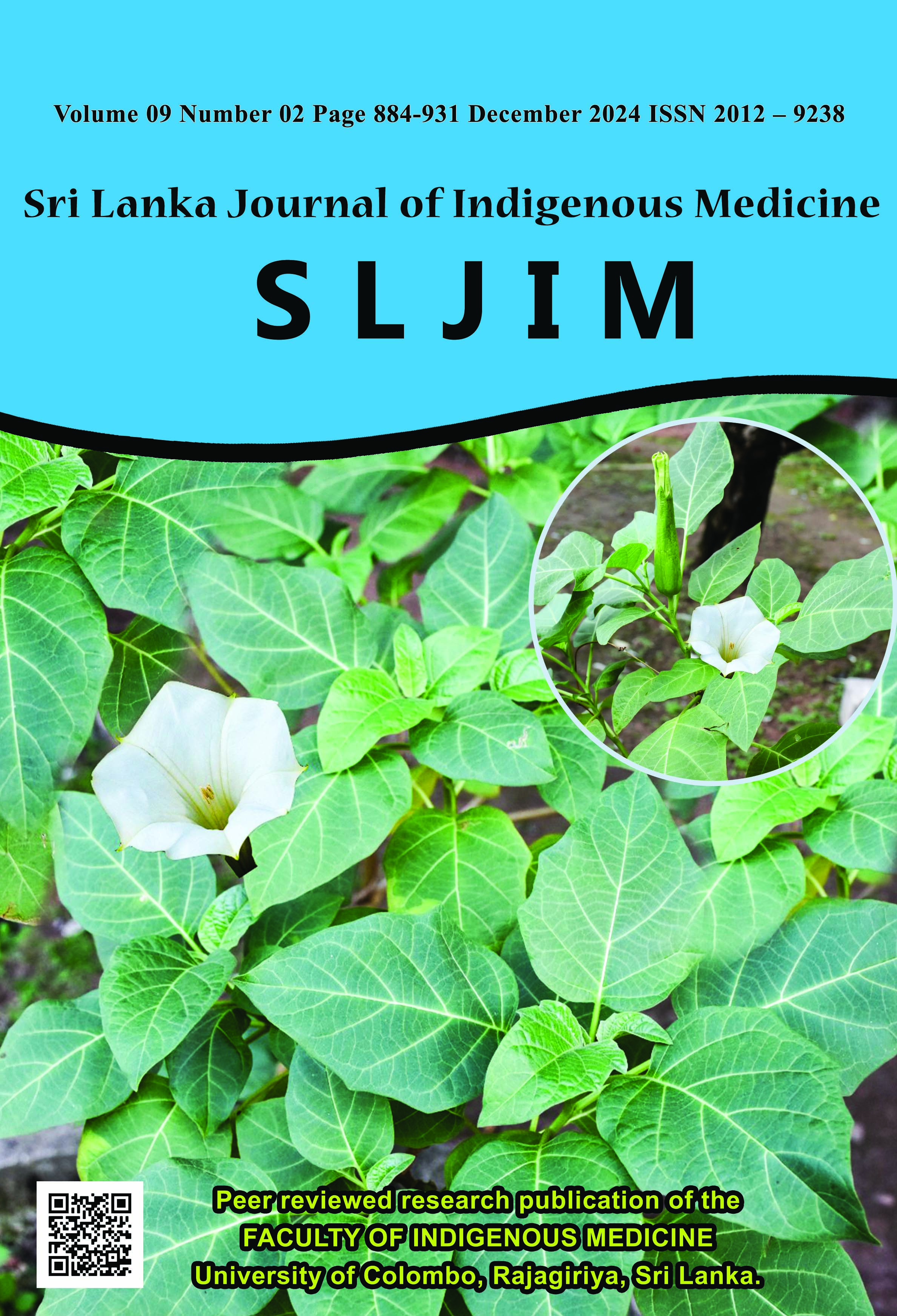Vol. 9 No. 2 (2024): December - Sri Lanka Journal of Indigenous Medicine (SLJIM)

Cover story - Ela Aththana
Batanical name: Datura metel L
Family: SOLANACEAE
Vernacular names: Sinhala: Ela aththana; Sanskrit: Dhattura, Dhastura, Unmatta, Shivapriya, Harapriya, Hema, Dhustura, Kanaka Ghantapuspa; English: Devil's trmput, Thorn apple, Downy datura; Tamil: Venumattai; Hindi: Madar, Akoa, Akond, Akona
The Ela Aththana (Datura metel), featured on the cover of this book, symbolizes the intricate balance between nature's beauty and its profound power. A member of the Solanaceae family known for its elegant, trumpet-shaped white blooms, this plant has captivated human curiosity for centuries, inspiring awe and caution in equal measure.
Morphology of the Ela Aththana is characterized by its large, trumpetshaped flowers, typically white or pale purple, which exude an aura of purity and mystique. The plant bears broad, dark green leaves with a distinct lobed appearance and a pungent aroma. Its spiny, oval-shaped fruits contain numerous small seeds, emblematic of the plant’s capacity for regeneration. These features make Datura metel an unmistakable species within the Solanaceae family1.
Historically revered for its potent alkaloids: atropine, scopolamine, and hyoscyamine. Datura metel is well known for its insecticidal, herbicidal, anti-fungal, anti-bacterial, anti-cancer, anti-inflammatory and anti-rheumatoid activity.2 This plant represents the fine line between therapeutic potential and toxicity. Its inclusion on the cover symbolizes the delicate balance in pharmacological science, where understanding and harnessing natural compounds can lead to groundbreaking discoveries in health and medicine. This plant is used as a whole in therapeutics. Its leaf, flower, and seed are also used individually for different purposes 3 .
By featuring the Ela Aththana, this book pays homage to the beauty, complexity, and profound influence of the natural world on the field of pharmacology. It serves as an invitation to explore the intricate relationships between plants and medicine and the transformative power of science.
References
1. Islam T., Ara I., et.al., (2023), Ethnobotanical uses and phytochemical, biological, and toxicological profiles of Datura metel L.: A review, Current Research in Toxicology, doi: 10.1016/j.crtox.2023.100106
2. Khaton M. Monira and Shaik M. Munan, (2012), Review on Datura metel: A Potential Medicinal Plant, GJRMI, 01(4):123-132.
3. Kadam S.D. et.al, (2018), Pharmacognostic Review on Datura, Research Journal of Pharmacology and Pharmacodynamics, 10(4): 171-178.
Cover story by Prof. M.I. Manuha
Photographed by Mr. G.S.K. Perera
Cover page designed by Mr. K.K.P.R.K. Kohombakanda

